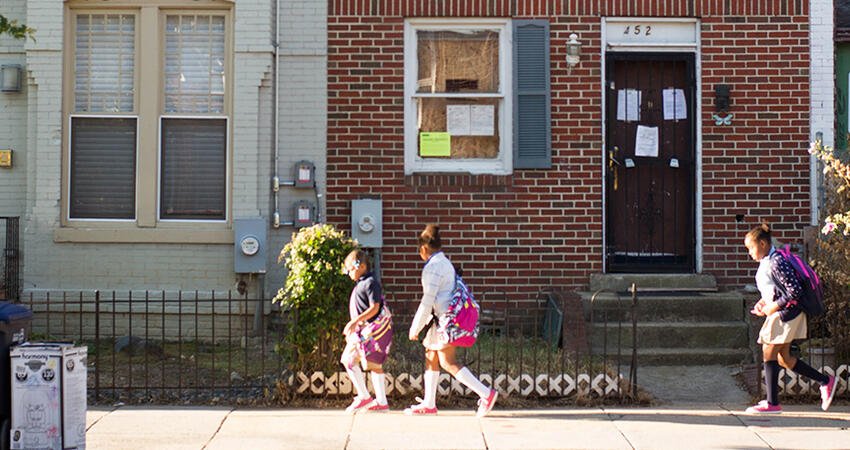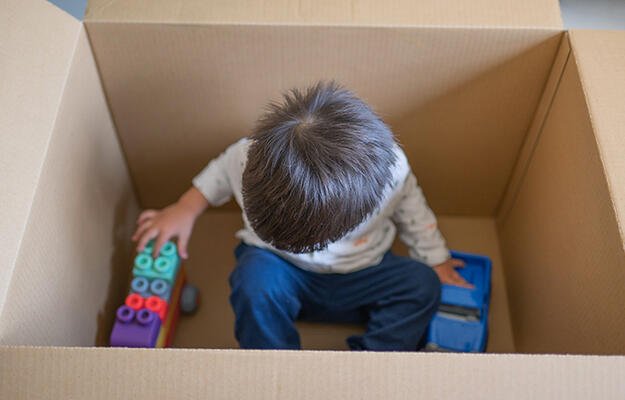
Creating a Door out of Poverty Starts with Partnerships
by Maya Brennan, Jennifer Hicks, and Jennifer Peck
People’s lives center around their home. On average, Americans spend two-thirds of their time either indoors or outdoors at home. For kids under age 11, the typical share is nearly three-quarters. And for those without a home, the absence of such a basic need makes everything else more difficult.
That’s why nearly any effort to effect change—in energy efficiency, health, financial self-sufficiency, or education—is stronger when it employs housing as a platform or partner.
For speakers and attendees at the 2016 How Housing Matters conference, an overarching question was, After growing the evidence base and increasing awareness about the central importance of housing, how can we act on it? How can we build policies, programs, and partnerships that treat people like the integrated whole that they are?
The three brief case studies that the National Housing Conference released to accompany the conference demonstrate the potential for mission-driven entities to make headway—despite challenges—and open opportunities for people of all incomes and backgrounds to succeed.
Getting Started
One housing-education partnership model in California is worth exporting to other states and other sectors. The Partnership for Children & Youth (PCY) realized they could better support equitable educational opportunity for all children by working with affordable housing communities to create or strengthen on-site afterschool and summer learning programs. The initiative, HousED, has developed standards for expanded learning programs offered at affordable housing sites, engages affordable housing developments (public housing or in the privately owned affordable stock), and trains program staff.
The HousED partnerships start like any relationship. Sometimes, a current partner tells a friend or colleague. Sometimes, e-mail campaigns and social media attract a potential partner’s attention. At that point, the question becomes, Where is the organization coming from, and what can PCY offer? Depending on an organization’s needs, PCY’s assistance could take many forms, such as a free or low-cost professional assessment, coaching, training, mentoring, or consultations on summer learning or subsidized meal programs.
PCY doesn’t need to be big to have a big impact. HousED trainings have built the skills of 100 staff who serve more than 47,000 children in the Bay Area. If education is a door out of poverty, PCY’s trainings help make sure that door is open even for children whose parents can’t afford to spend much on educational enrichment.
The demand for HousED exceeds its resources. Opening the door for even more children to achieve educational success will only be possible with a greater investment in tools and strategies that will help spread the work.
Grounded in Evidence
For HousED and other programs, PCY’s professional development assistance uses an evidence-based system called the Youth Program Quality Intervention (YPQI). YPQI is a continuous improvement approach that starts with an assessment and then continues with the ongoing engagement of staff in planning and improvement—and then the assess-plan-improve cycle continues. An evaluation of YPQI across 87 afterschool sites in four states found that the program improved the quality of instruction and was associated with higher levels of staff engagement and longer staff tenure, even in programs with relatively new managers, high youth-to-adult ratios, and a large share of staff with a high school degree.
While the model builds on evidence, so does its implementation. Real-time feedback from trained coaches and observation of staff working with kids are critical components of achieving quality.
The emphasis on continuous improvement can coexist with a pleasant working environment. HousED provides a safe, supportive place for staff working with kids in affordable housing contexts to learn with and from one another, which helps them not feel isolated in their work and builds a sense of pride and community. Operating as a “professional learning community” helps support and build the skills of the staff and may explain YPQI’s impact on staff retention in a field that experiences relatively high turnover.
A Flexible and Collaborative Cycle for Partnerships
When the HousED initiative started, new housing partners went through the same professional development trainings, but not everyone’s needs were the same. A new process, built around the YPQI cycle, embraces each organization’s differences while establishing the collaborative nature of the partnership and an emphasis on the program’s educational goals.
HousED’s quality improvement cycle has six steps:
- Establish a shared vision and purpose with clear goals and objectives
- Assess each party’s capacity to implement the goals and objectives
- Create a plan based on the assessment
- Implement the plan
- Reflect and celebrate accomplishments
- Repeat
The cycle could be adopted by any organization seeking to effect change through a partnership, but it may be deceptively simple.
When establishing a partnership, a lot of time is often spent defining goals and objectives and creating a plan. But having access to resources to implement that plan can be a challenge. In the HousED model, PCY assists in finding resources for successful implementation. By taking on that role, the organization shows its partners from the housing side that they can rely on PCY to support them.
But the responsibility for a program’s success doesn’t reside in one partner alone. While PCY assists with resources, the housing partners use those services to implement their part of the plan. Ultimately, families need to decide that the extending learning program is valuable for their children. When these pieces come together, the youths who participate in extended learning programs benefit, as do their families, communities, and the housing organization.
How can we act on the evidence about the importance of housing for various societal goals? Each of us, whatever our expertise or issue, can clarify our vision and goal and then learn from the assess-plan-improve cycle. With that, more effective partnerships and whole-person solutions can form.
Author Note: Jennifer Hicks is the director of the HousED initiative. Jennifer Peck is the President & CEO of Partnership for Children and Youth.


